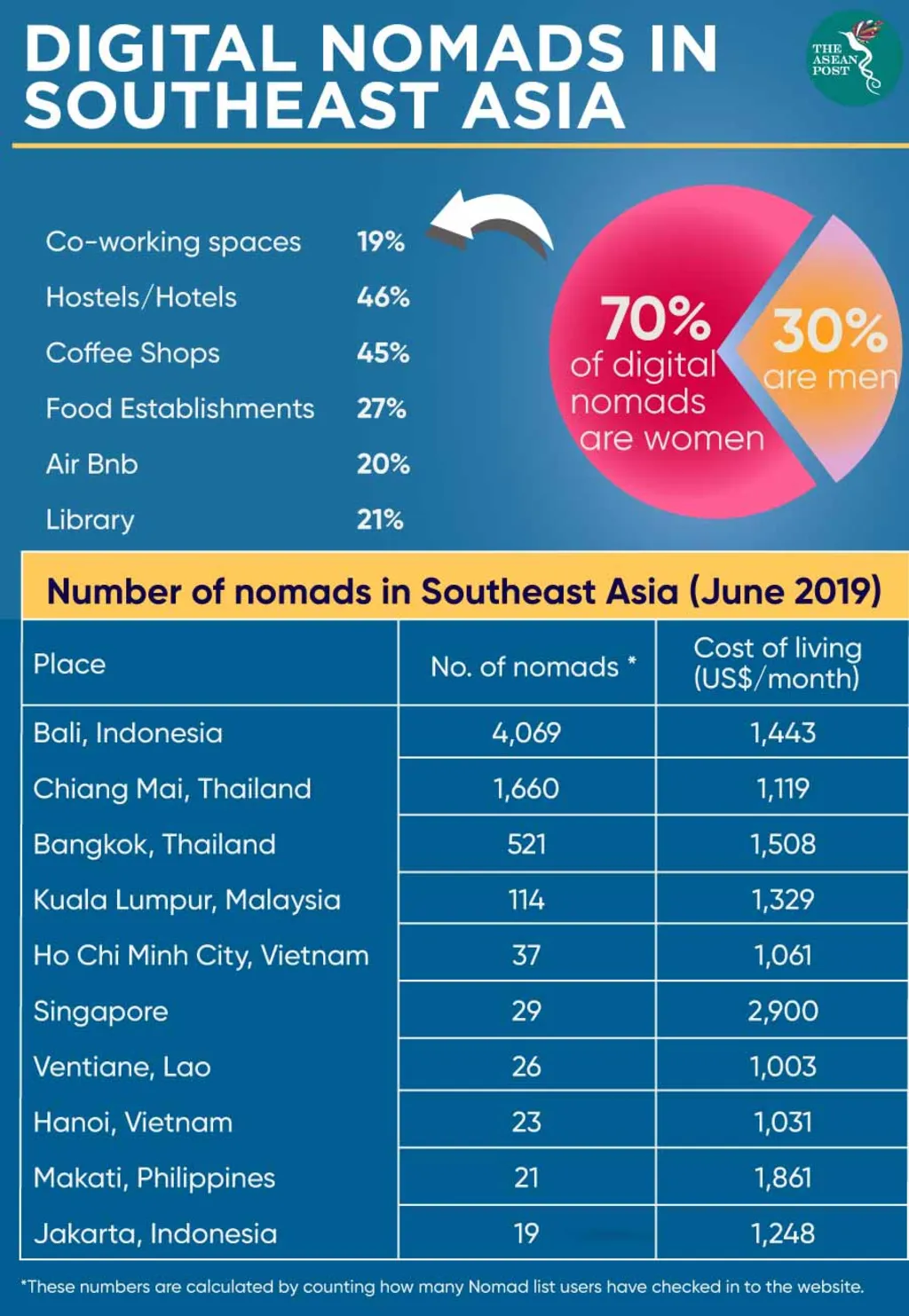Digital nomads and everything remote are changing how we see the world, and this includes Southeast Asia Digital Nomads. The region has emerged as a global hotspot for digital nomads. In 2024, the worldwide digital nomad population passed 40 million, and Southeast Asia now hosts half of the world’s top 10 cities favored by remote workers. Bangkok, Ko Pha Ngan, Canggu, Uluwatu, and Da Nang have shifted from just exotic travel destinations to work hubs. The reasons behind the boom are simple: affordability, fast internet, and lifestyle.
Cities like Bangkok boast internet speeds of 256.1 Mbps and monthly living costs around £623. This, combined with an active community and vibrant local culture, makes Southeast Asia the perfect launchpad for remote work life.
Economic Impact: Southeast Asia Digital Nomads Spending Local
Digital nomads aren't just passing through—they're spending. The average digital nomad earns around USD 85,000 per year and puts 35% of that income into local economies. That’s money spent on housing, coworking spaces, food, transport, and experiences—all of which directly support local jobs and small businesses.

In 2023, Southeast Asia welcomed over 100 million tourists, and a growing share of that number includes longer-staying digital nomads. They blur the line between tourist and resident, staying longer and spending more than traditional visitors.
Read Also: Southeast Asia Digital Trade Sparks Tech Revolution
Southeast Asia Digital Nomads: Visas, Workspaces, and New Growth
Governments are starting to respond. Countries like Thailand, Indonesia, and Malaysia are rolling out special digital nomad visas, making it easier for remote workers to stay longer and work legally. These programs aren’t just about paperwork—they signal a regional shift toward embracing remote work as a new driver of economic growth.
At the same time, the Asia-Pacific co-living market is booming, projected to grow at 17.9% CAGR through 2025. These flexible living spaces combine homes with community and productivity, attracting remote workers who want more than a hotel room.
Demand for co-working spaces is also on the rise. From sleek workspaces in Bali to community hubs in Ho Chi Minh City, the infrastructure is expanding to keep up with this mobile workforce.
In places like the Philippines, remote work interest grew 173% year-on-year in 2025, showing that the trend is gaining speed—and not just among foreign visitors. Local professionals are also embracing the flexibility and freedom digital nomadism offers.
Read Also: Southeast Asia Cross-Border Trade Goes Digital
Property and Hospitality: Shifting Demand
The influx of Southeast Asia digital nomads is also reshaping property and hospitality markets. Hotels are adapting with long-stay packages. Real estate developers are exploring hybrid residential models. New business districts now include co-working zones.
In short, digital nomads are changing how people live and work in Southeast Asia—and cities are adapting in real time.
Southeast Asia Digital Nomads: A Market in Motion
The rise of Southeast Asia digital nomads is more than a lifestyle trend but also a market force. With strong income, longer stays, and high local engagement, digital nomads are fueling growth across co-working, hospitality, and property sectors. For governments, businesses, and investors, the opportunity is clear: support remote work, attract global talent, and build flexible infrastructure to turn this shift into sustained economic gain.







